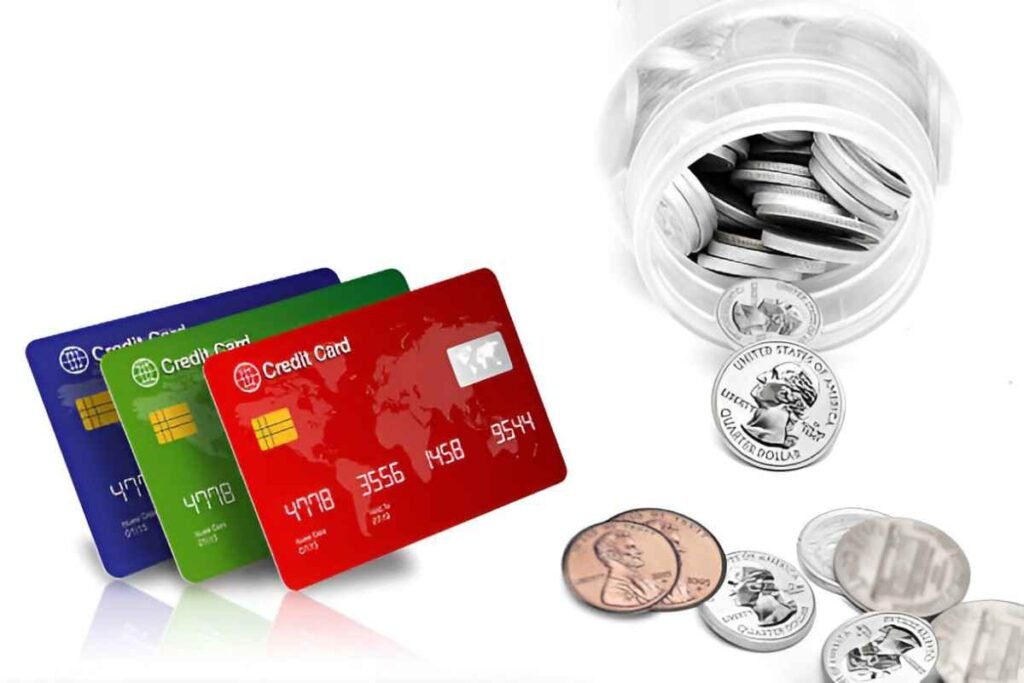When I first started looking into air mile credit cards, I wasn’t sure where to start. There are so many options out there, and each card promises its own set of benefits. After some research, I realized that choosing the right air mile credit card can really make a difference when it comes to how fast I can accumulate miles and how valuable those miles are when it comes to redeeming them for flights, upgrades, or even other travel-related perks.
In this guide, I will walk you through the world of air mile credit cards, comparing different options, explaining how they work, and helping you figure out which one might be the best fit for your travel goals. I’ll break everything down step-by-step, so you can feel confident when it comes to choosing the right card for your needs.
Table of Contents
What Are Air Mile Credit Cards?
Air mile credit cards are a type of rewards credit card that allows you to earn miles or points on every purchase you make. These miles can be redeemed for flights, hotel stays, car rentals, and other travel-related expenses. Some cards are affiliated with specific airlines, while others let you accumulate points that can be transferred to a variety of airline partners.
To make it easier for you, here’s a simple breakdown of the types of air mile credit cards:
- Co-branded Airline Cards: These cards are partnered with specific airlines. They offer bonuses for spending within the airline’s network and can often get you exclusive perks like priority boarding, free checked bags, and access to airport lounges. Examples include the American Airlines AAdvantage card or the Delta SkyMiles card.
- General Travel Rewards Cards: These cards allow you to accumulate points that can be transferred to multiple airlines or used for various travel expenses. Examples include the Chase Sapphire Preferred Card or the American Express Gold Card.
How Do Air Mile Credit Cards Work?
The basic concept behind air mile credit cards is simple. Every time you make a purchase with the card, you earn miles or points. The number of miles you earn depends on the card’s rewards structure. For example, some cards offer 1 mile per dollar spent, while others offer higher rewards for specific categories, like dining or travel.
Understanding the Value of Air Miles
Before I dive deeper into specific cards, let’s talk about how much a mile is actually worth. The value of air miles can vary depending on how they’re redeemed. On average, you can expect 1 mile to be worth between 1 and 2 cents. But this value can fluctuate significantly. Here’s an example:
- If I redeem 50,000 miles for a flight that costs $500, then each mile is worth 1 cent.
- If I redeem the same 50,000 miles for a business class upgrade worth $1,000, the value per mile increases to 2 cents.
As you can see, the value of miles depends on how and when they’re redeemed. Some strategies can help increase the value of your miles, and I’ll touch on that later.
The Pros and Cons of Air Mile Credit Cards
Before I get into specific card recommendations, let’s weigh the pros and cons of air mile credit cards in general. This will help you understand if they’re the right choice for your lifestyle and spending habits.
Pros:
- Free Flights and Travel Rewards: This is the biggest advantage of air mile credit cards. With enough miles, I can book flights without spending a cent on airfare.
- Sign-up Bonuses: Many air mile cards offer large sign-up bonuses if you meet a certain spending requirement within the first few months. These bonuses can significantly boost your miles balance.
- Additional Travel Perks: Some cards offer priority boarding, free checked bags, lounge access, and other travel-related benefits that can make your trips more comfortable.
Cons:
- High Annual Fees: Some air mile credit cards come with high annual fees, which may not be worth it unless you travel frequently enough to take full advantage of the perks.
- Interest Rates: Like any credit card, if I don’t pay my balance in full each month, I’ll be hit with interest charges that can quickly negate the value of any rewards I’ve earned.
- Complicated Redemption: Not all rewards programs are straightforward, and redeeming miles can sometimes be tricky, especially when it comes to blackout dates or limited availability.
How to Choose the Best Air Mile Credit Card
When I’m evaluating air mile credit cards, I keep a few things in mind. Here’s a simple guide to help you narrow down the options.
1. Understand Your Spending Habits
Each air mile credit card offers different categories for earning miles. Some cards offer higher rewards for travel expenses, while others offer more for dining, groceries, or gas. It’s important to choose a card that aligns with where I spend the most money.
Here’s an example of how this might look:
| Card | Travel | Dining | Groceries | Other |
|---|---|---|---|---|
| Chase Sapphire Preferred | 2 points per $1 | 2 points per $1 | 1 point per $1 | 1 point per $1 |
| American Express Gold | 1 point per $1 | 4 points per $1 | 3 points per $1 | 1 point per $1 |
| Capital One Venture | 2 miles per $1 | 2 miles per $1 | 2 miles per $1 | 2 miles per $1 |
2. Consider the Airline Network
If you prefer flying with a particular airline, a co-branded airline card could be a good option. These cards often provide extra perks like priority boarding, free checked bags, and miles bonuses for purchases with the airline. However, if you prefer flexibility, a general travel rewards card that allows you to transfer miles to a variety of airlines might be the better choice.
3. Check the Sign-Up Bonus
Many cards offer generous sign-up bonuses if you meet a minimum spending threshold within the first few months. This can be a quick way to rack up miles. For example, the Chase Sapphire Preferred card offers 60,000 points as a sign-up bonus when you spend $4,000 in the first three months. That’s worth at least $750 toward travel when redeemed through Chase Ultimate Rewards.
4. Review the Annual Fee
While many premium cards come with high annual fees, they also offer valuable perks that can justify the cost. For example, the American Express Platinum card has a $695 annual fee, but it includes lounge access, travel credits, and other benefits that can make it worthwhile if you travel frequently.
5. Look for Foreign Transaction Fees
If I plan to use my card abroad, it’s important to choose a card with no foreign transaction fees. Some cards charge an extra 2-3% for purchases made outside the U.S., which can quickly add up.
Example: Earning and Redeeming Miles
Let’s say I’m using the Chase Sapphire Preferred card, which earns 2 points per dollar spent on travel and dining, and 1 point per dollar on everything else. If I spend $1,000 on travel and dining in one month, I would earn 2,000 points.
Now let’s assume I’ve accumulated 50,000 points. If I use the Chase Ultimate Rewards portal to book travel, I can redeem 50,000 points for $625 worth of travel. That’s a redemption rate of 1.25 cents per point. Alternatively, if I transfer the points to an airline partner, I could potentially get a higher value per point, depending on the airline’s award chart.
How to Maximize Your Miles
To get the most value from my air miles, I follow a few key strategies:
- Use Bonus Categories: I try to use my card for categories that offer the highest reward rates, like dining, travel, or groceries, depending on the card.
- Transfer Points to Airline Partners: If I’m using a general travel card like Chase Sapphire Preferred, I transfer my points to one of their airline partners (like United or Southwest) for potentially better redemption options.
- Take Advantage of Sign-Up Bonuses: I always aim to meet the minimum spending requirement for sign-up bonuses, as they can give me a significant boost to my miles balance.
- Plan My Travel: By planning my trips in advance and booking flights during off-peak times, I can often find award flights with better availability and fewer miles required.
Conclusion
Choosing the best air mile credit card comes down to understanding my spending habits, the value of the miles I earn, and how I plan to redeem those miles. Whether I opt for a co-branded airline card or a general travel rewards card, there are plenty of ways to maximize the miles I accumulate and use them for amazing travel experiences. By carefully considering the factors that matter most to me, I can ensure that I’m getting the most value out of my air mile credit card.





